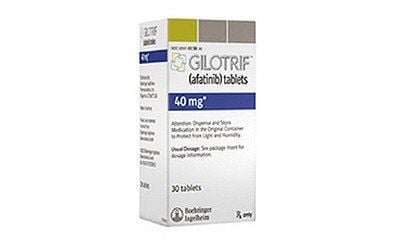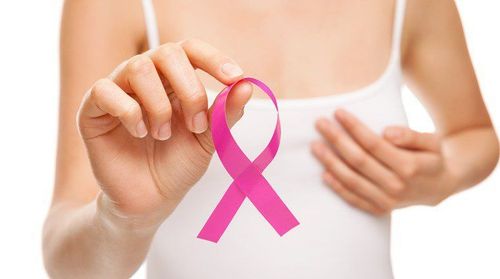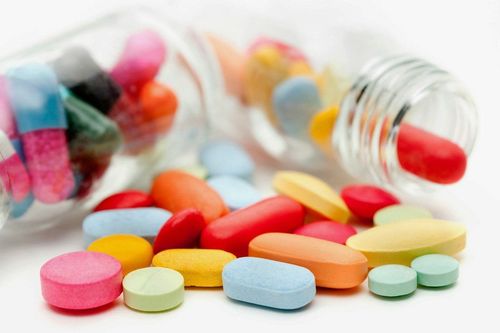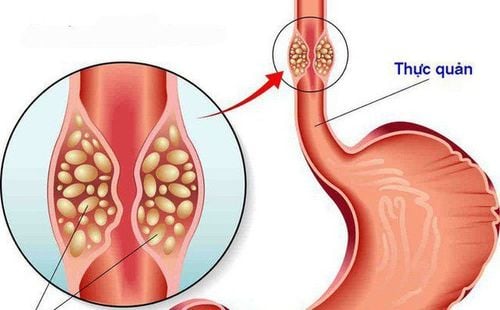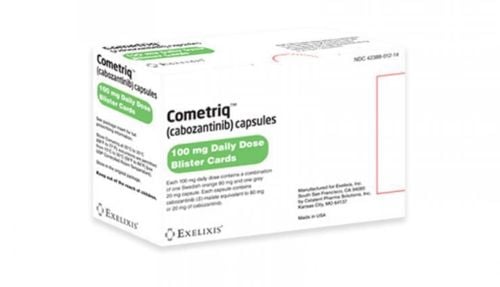This is an automatically translated article.
Although cancer is the second leading cause of death in the world, survival rates are improving thanks to advances in cancer cell screening and treatment.1. What is cancer?
Cancer is a group of diseases characterized by the abnormal growth of cells that divide uncontrollably and have the ability to invade and destroy normal body tissues.Most of the time, the cells in the body have a specific function and a fixed lifespan. During regulation, a cell receives instructions to die and the body can replace it with a newer, better-performing cell. With cancer cells lack the factors that instruct them to stop dividing and die. The result leads to a build-up in the body, using up oxygen and nutrients that would normally nourish other cells.
Cancer cells may appear in one area, then spread through the lymph nodes. Some types of cancer cause rapid cell growth, while others cause cells to grow and divide at a slower rate.
There are more than 100 different types of cancer. Cancer is often named after the organ in which it originates, for example: Lung cancer arises from cells in the lung, colon cancer arises from cells in the colon. Cancers can also be called by the type of cells that form them, such as carcinoma (carcinoma) or cancer of the connective tissue (sarcoma). In addition, cancers can develop from the blood, as are blood malignancies.

Ung thư thường được gọi tên theo cơ quan mà nó phát sinh như: ung thư gan
2. What is the difference between cancer cells and healthy cells?
Cancer cells differ from normal cells as cancer cells are less specialized than normal cells. In addition, cancer cells have the ability to ignore signals that normally inhibit cell growth and division, such as programmed cell death signals – signals that help the body get rid of cells. unnecessary cells.
The normal immune system is capable of removing and destroying damaged or abnormal cells from the body, but cancer cells can "go invisible" to the immune system. Moreover, they also have the ability to take advantage of the immune system, which can avoid the body's immune response to survive and thrive.
Cancer cells can affect the normal cells, molecules and blood vessels that surround and nourish the tumor. One area is called the microenvironment. For example, cancer cells can induce nearby normal cells to form blood vessels that supply oxygen and nutrients to the tumor. These blood vessels also remove waste products from the tumor.
3. Symptoms of cancer
Signs and symptoms caused by cancer will vary depending on which part of the body is affected as well as the stage of the disease.
Basically, in the early stages, the body will hardly notice the different signs. However, some general signs and symptoms associated but not specific to cancer may include:
Fatigue Unusual weight changes, including unintended weight loss or gain. Skin changes, such as yellowing, darkening or redness, sores that won't heal, or changes to an existing mole Persistent cough or trouble breathing Difficulty swallowing, hoarseness Persistent indigestion or discomfort after eating Persistent muscle or joint pain Persistent unexplained bleeding or bruising

Mệt mỏi là dấu hiệu thường gặp nhất của ung thư
4. Causes of cancer
4.1 DNA mutations
Cancer is caused by changes (DNA mutations) in cells. The DNA inside a cell is packaged into a large number of individual genes, each of which contains a set of instructions that tell the cell what function to perform, as well as how to grow and divide. Errors in instructions can cause cells to stop working properly and can allow cells to become cancerous.
These mutations are the most common mutations found in cancer. But many other genetic mutations can contribute to cancer.

Đột biến DNA là nguyên nhân gây ung thư
4.2 Unscientific lifestyle
Daily lifestyle is also considered as a risk factor for cancer. Smoking, drinking more than one drink a day (for women of all ages and men over 65) or two drinks a day (for men 65 and under), excessive exposure to sunlight Sun exposure or frequent sunburns, being obese, and having unprotected sex can all contribute to cancer.
4.3 Heredity
If cancer is common in your family, it's possible that mutations are being passed on from one generation to the next. You can have genetic testing to see if you have inherited mutations that increase your risk of certain cancers. Remember that having an inherited mutation does not necessarily mean you will get cancer.
Certain chronic health conditions, such as ulcerative colitis, can significantly increase the risk of developing cancer. Therefore, for people with chronic diseases, it is necessary to see a doctor and monitor their health regularly.

Yếu tố di truyền làm tăng nguy cơ mắc một số bệnh ung thư
4.4 Environmental pollution
The surrounding environment contains harmful chemicals that can increase the risk of cancer. Even if you don't smoke, you can still breathe in secondhand smoke if you go to a place where people are smoking or if you live with a smoker. Chemicals in the home or workplace, such as asbestos and benzene, have also been linked to an increased risk of cancer.
5. How does cancer develop?
Tumors are also divided into 2 types. Benign and malignant tumors.
Benign tumors will grow to a certain extent and then stop. Malignant tumors will grow indefinitely. Excessive cell growth leads to the level of compression, causing damage to neighboring cells. It won't stop until there's nothing left to break. Worse is when these malignant cells metastasize (migrate) to other areas that are at risk of death such as the brain, heart, lungs, etc.
Cancer is caused by mutations in genes. controls cell function, especially genes that control cell growth and division.
The researchers realized that each cancer cell contains many mutations. There are a number of mutations that can be seen in many different forms of cancer. The cancers are similar in histology but respond differently to treatment, and therefore the prognosis is also very different. For example, the group of colorectal cancers without KRAS and BRAF mutations had a better prognosis than the group with mutations in either gene. Therefore, the frequency and types of gene mutations are now commonly used for subgrouping cancer.

Ung thư ác tính có thể di căn sang các bộ phận khác
6. Complications of cancer
Having cancer can cause a number of complications, including:Painful sensations. Pain can be caused by cancer or cancer treatment, although not all cancers are painful. Tired. Fatigue in people with cancer has many causes, but can often be controlled. Fatigue related to chemotherapy or radiation is common. Shortness of breath, nausea. Diarrhea or constipation. Cancer and cancer treatment can affect your intestines and cause diarrhea or constipation. Weight loss is caused by cancer cells using nutrients from normal cells. Metabolic changes in your body. Cancer can upset the normal metabolic balance in your body and increase your risk of serious complications. Signs and symptoms of a metabolic imbalance may include excessive thirst, frequent urination, and constipation. Brain and nervous system problems. The tumor can press on nearby nerves, causing pain and loss of function in a part of the body. Cancers involving the brain can cause headaches and stroke-like signs and symptoms, such as weakness on one side of the body. Abnormal immune system response to cancer. In some cases, the body's immune system may respond to the presence of cancer by attacking healthy cells. Called paraneoplastic syndromes, these very rare reactions can lead to a range of signs and symptoms, such as difficulty walking and seizures. As cancer progresses, it can spread (metastasize) to other parts of the body. People who are treated after cancer are still at risk of recurrence. You need to consult with your doctor so you can come up with a follow-up care plan. This plan may include routine scans and checkups in the post-treatment period to look for cancer recurrence.
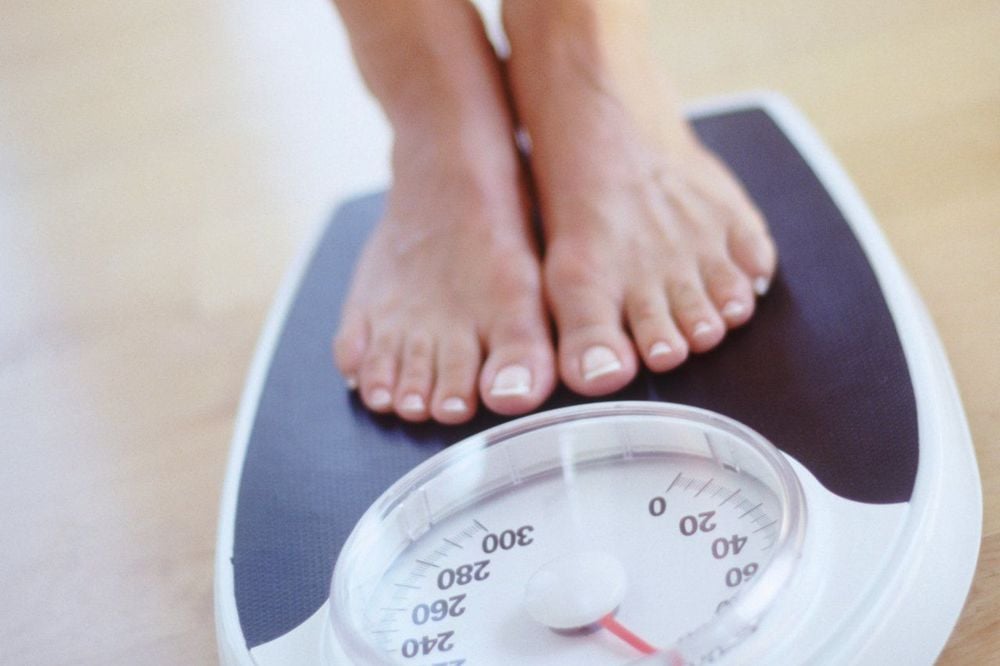
Bệnh ung thư khiến người bệnh bị giảm cân đột ngột
7. Cancer treatments
Doctors often recommend treatment based on the type of cancer, the stage at diagnosis, and the patient's overall health. Here are some of the current cancer treatments:
Chemotherapy aims to kill cancer cells with drugs that target cells that are dividing abnormally. Medications can also help shrink tumors, but the side effects are often serious. Hormone therapy involves taking medications that change the action of certain hormones or interfere with the body's ability to produce. When hormones play an important role, as with prostate and breast cancer, this is a common approach. Immunotherapy uses drugs and other treatments to boost the immune system and encourage it to fight cancer cells Precision medicine, or personalized medicine, is a new approach more, growing. It involves using genetic testing to determine the best treatment for a person with cancer. Researchers have yet to show that it can effectively treat all types of cancer. Radiation therapy uses high-energy radiation to destroy cancer cells. In addition, your doctor may recommend using radiation to shrink a tumor before surgery or relieve symptoms associated with a tumor. A stem cell transplant may be especially beneficial for people with blood-related cancers, such as leukemia or lymphoma. Surgery is often part of the treatment plan when a person has a cancerous tumor. In addition, a surgeon may remove lymph nodes to reduce or prevent the disease from spreading. Doctors will often use more than one type of treatment to maximize effectiveness.
8. Can cancer be prevented?
Usually, there is no method to completely prevent the risk of cancer. But doctors have identified several ways to reduce the risk of cancer such as:
Quit smoking. Smoking, whether active or passive, has been linked to several types of cancer - not just lung cancer. Not only you but those around you need to stop smoking will reduce the risk of cancer in the future. Avoid excessive sun exposure. Harmful ultraviolet (UV) rays from the sun can increase the risk of skin cancer. Use protective clothing or apply sunscreen if you must go outside.

Tránh tiếp xúc với ánh nắng mặt trời giảm nguy cơ mắc bệnh ung thư
Eat a healthy diet. Choose a diet rich in fruits, vegetables, whole grains, and protein to boost your health. Regular exercise helps lower cancer risk Maintain a healthy weight. Being overweight or obese can increase the risk of cancer. Therefore, achieving and maintaining a healthy weight should be through a combination of a healthy diet and regular exercise. Cancer screening. Contact your doctor about the type of cancer screening test that is best based on your cancer risk factors in everyday life.. Immunizations. Immunizations can help prevent certain types of cancer-causing viruses. Any questions that need to be answered by a specialist doctor as well as if you have a need for examination and treatment at Vinmec International General Hospital, please book an appointment on the website for the best service.
Please dial HOTLINE for more information or register for an appointment HERE. Download MyVinmec app to make appointments faster and to manage your bookings easily.





